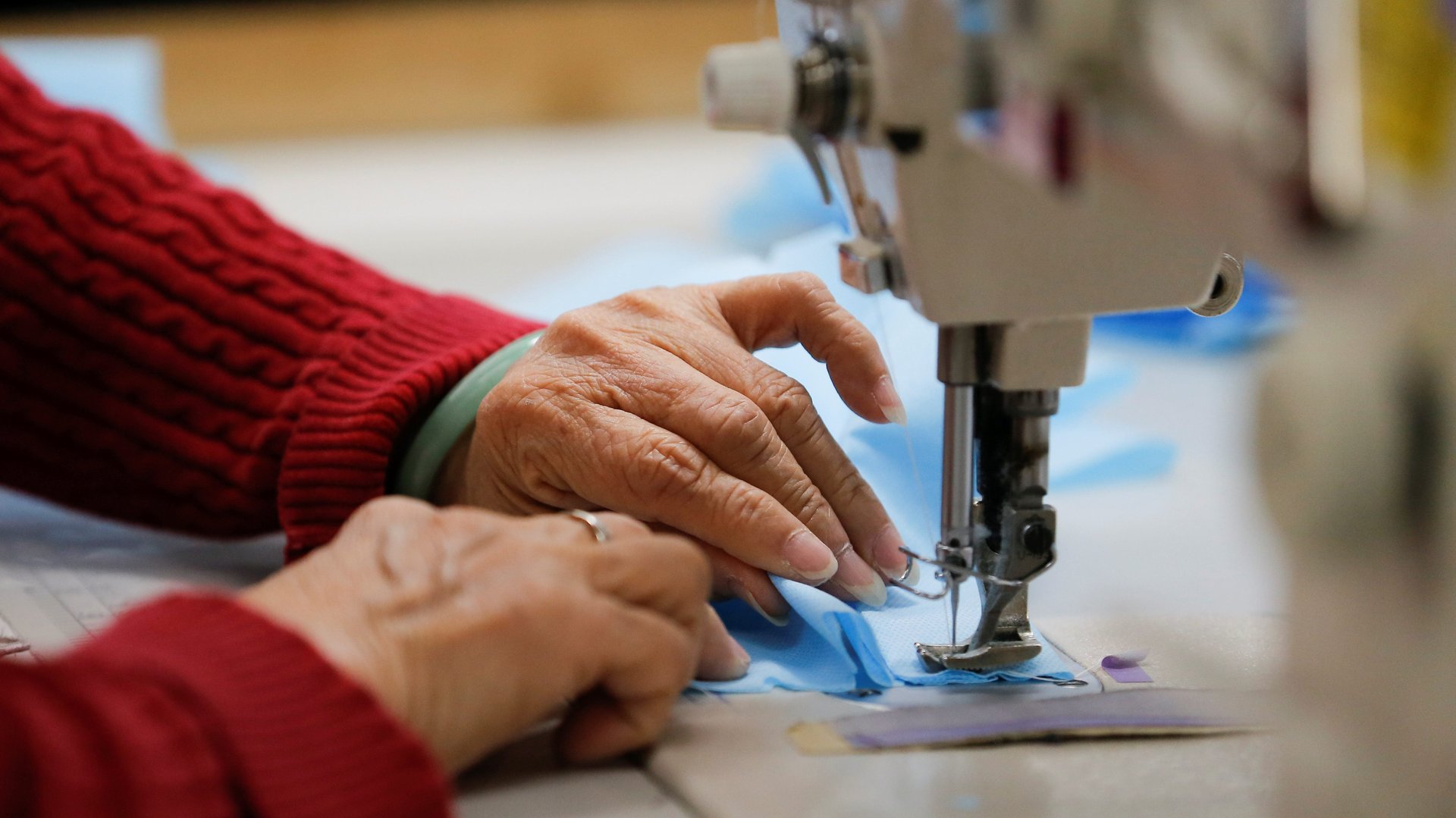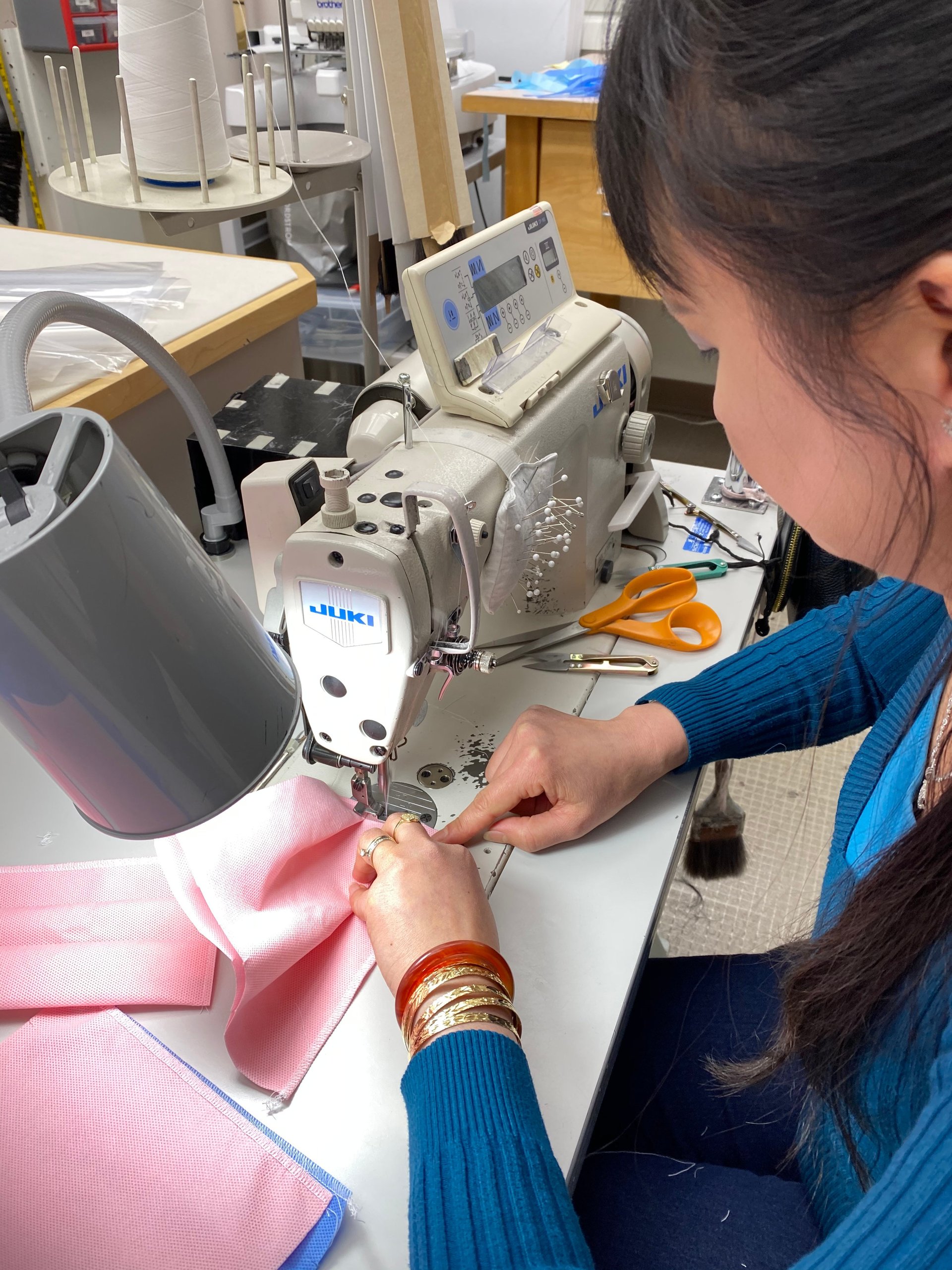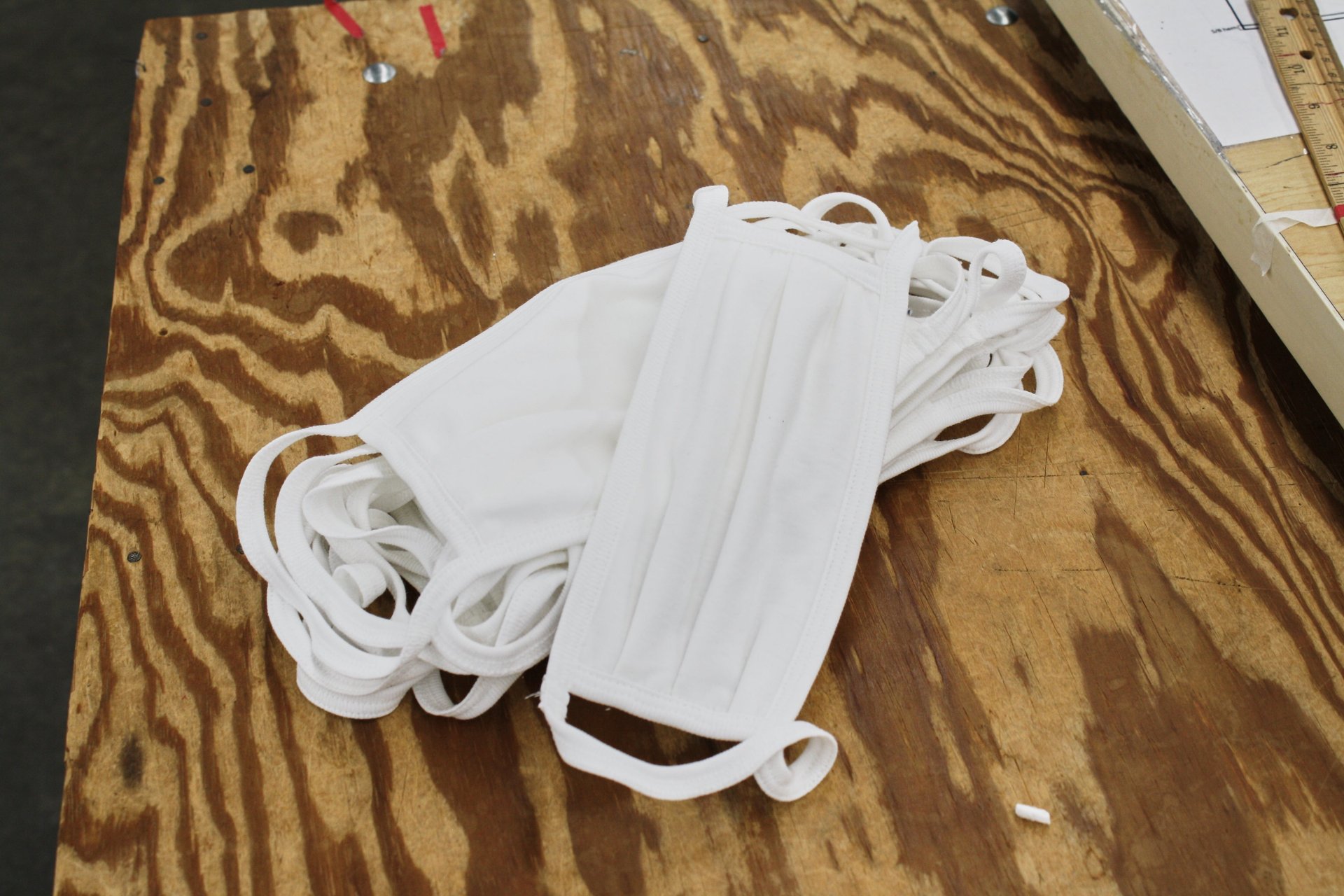US fashion brands having to make medical masks expose a failure of the health system
Across the US, clothing companies and legions of home sewers are churning out face masks as fast as they can to meet the critical shortage of masks available to American medical workers. It’s a heartening and admirable effort by both companies and individuals to assist in a moment of national need.


Across the US, clothing companies and legions of home sewers are churning out face masks as fast as they can to meet the critical shortage of masks available to American medical workers. It’s a heartening and admirable effort by both companies and individuals to assist in a moment of national need.
There’s just one problem: Many of these masks are apparently being made from regular cloth textiles such as cotton, which research says offers little protection against infectious diseases such as the new coronavirus.
The situation isn’t the fault of those trying to help. Rather, it’s a sign of how unprepared the US health system was for an outbreak like Covid-19, both in the number of masks it had available and its ability to make more in an emergency.
Making masks as a last resort
Manufacturers of medical masks use specialized materials (pdf) made of a synthetic fiber—often polypropylene—formed into a web of fine filaments using what’s called melt-blown or spunbond technology. This non-woven polypropylene is capable of filtering out microscopic particles, which is why it’s preferred for medical-grade masks, such as N95 respirators, that form a seal around the nose and mouth. It’s also used for looser-fitting surgical masks, which are more for keeping the wearer from spreading disease and protecting them from sprays of liquid.
But making it is a complex process and not all textile producers, such as the kind that commonly supply clothing fabrics to fashion companies, have the industrial machines to do it. Manufacturers that do are currently unable to meet the overwhelming demand.
Many clothing companies and home sewers are improvising. Fanatics, a sports merchandising company, has said it’s making masks from the same fabric it uses for baseball jerseys. Smaller fashion companies and home sewers are using whatever materials they have on hand. Fabric and crafts retailer JoAnn has partnered with Neiman Marcus to produce masks.
In California, the Los Angeles mayor’s office, in partnership with fashion retailer Reformation and under guidance from healthcare company Kaiser Permanente, is asking local manufacturers (pdf) to make masks from latex-free cotton or cotton-blend materials of specific weights. Gap Inc. is connecting California hospitals directly with vendors in its supply chain that it knows have personal protective equipment (PPE) available. A Gap spokesperson said in an email the company is also working with its manufacturing partners to explore producing “fabric masks” and other protective gear, though it’s still working out details such as materials it will use.
These mask makers generally say they’re following guidance from federal or local health authorities and are clear in specifying the masks they’re producing are not medical-grade. Their hope is to free up the more effective N95 respirators and surgical masks for the workers who need them most. Cloth masks, which could at least be laundered and reused, are a last resort for nurses and doctors in need. Making them is also a way for clothing companies and anyone with a sewing machine to feel like they are helping.
But while there is some evidence that any face mask, even a homemade one, is better than nothing, cloth masks arguably don’t offer sufficient protection for workers on the front lines. The World Health Organization, for instance, states in its guidance (pdf), “Cloth (e.g. cotton or gauze) masks are not recommended under any circumstance.”
A 2015 study (pdf) of roughly 1,600 workers at hospitals in Vietnam found nearly 97% of particles penetrated the cloth masks, versus 44% for medical masks. Workers who wore cloth masks also had higher rates of infection than those wearing surgical masks or those in an unmasked control group, perhaps in part because the cloth masks retained moisture.
“I think health workers using cloth masks are not adequately protected, and there is a work health and safety issue in telling them to work in a bandana or t-shirt mask,” Raina MacIntyre, lead author of the study and an expert on infectious diseases at the University of New South Wales (UNSW) in Australia, said in an email. “But what do we do? Let patients die or force our health workers into a high risk situation where they too may die? We need more acknowledgment of this question.”
Signs of a systemic failure
MacIntyre recently wrote a post for UNSW about the lack of proper protective equipment medical workers have had to contend with during the coronavirus crisis. She said the study she led is still the only randomized clinical trial to be conducted on cloth masks, and the conclusion was clear: “The most important point is that the paper does not say ‘do not wear a mask’—the message was that hospitals and governments should plan and stockpile proper disposable products such as surgical masks instead of cloth masks, to protect their workers,” she wrote.
It’s conceivable there would have been a shortage of medical masks in the US regardless of any precautions just because of the unforeseeable extent of the coronavirus outbreak. But it likely didn’t have to be as acute as it currently is.
The US had developed a strategic stockpile of protective medical gear, now maintained by the Department of Health and Human Services (HHS), but used much of it during the 2009 H1N1 flu pandemic. The public health system prioritized spending its inadequate budget on medicines and equipment for disasters and other disease scenarios, according to the Washington Post, and to keep costs down, skipped stockpiling masks in favor of relying on private companies with quick supply chains to react in an emergency.
But while the country could produce enough N95 respirators and surgical masks to meet demand under normal conditions, a 2017 analysis of its supply chain for personal protective equipment concluded it would have “minimal ability” to rapidly increase production in a crisis. Most protective masks are now made offshore, it said, and might be unavailable to the US in an emergency. Indeed, after the coronavirus crisis in China, which produces most of the world’s medical masks, the country was slow to resume exporting masks.
The US now finds itself with a fraction of the medical-grade masks it needs as its number of coronavirus cases spikes. Everyone is rushing to fill the gap as best as possible. Companies such as 3M and Honeywell that make N95 and surgical masks have quickly ramped up manufacturing. And even companies not in the business of making medical materials are finding ways to contribute more than plain cloth masks when they can.
Outdoor company Eddie Bauer said it had shifted production to making protective medical equipment at vendors that usually make its technical outerwear and have the capability. Nordstrom, which calls itself the largest employer of tailors in North America, is working with Kaas Tailored, a clothing manufacturer in Washington state, to sew masks made by cutting up and restitching surgical wrap provided by Providence, a healthcare organization asking for help making masks.

Possibly the biggest mask-making effort among apparel companies in the US is a coalition enlisted by the US government that includes Hanes, Fruit of the Loom, and several smaller firms. “Once fully ramped up in four to five weeks, the companies expect to produce up to 10 million face masks per week in the United States and in Central America,” the National Council of Textile Organizations said in a release.
The coalition has been coordinating directly with the HHS and the Federal Emergency Management Agency. Parkdale Mills, a large manufacturer of spun yarns, is supplying raw material while Hanes worked with the agencies to develop the fabric according to their specifications. Batches of the material and other components are already being sent to all the clothing makers to sew into masks, which are then sent back to FEMA to be distributed.
The material for the masks is made from three-ply, 100% cotton coated in an antimicrobial finish, according to Parkdale Mills. It’s unclear how it compares with other materials in protecting medical workers from infectious diseases, though experts have have previously proposed integrating antimicrobials such as copper or sodium chloride into masks as sterilization agents. The government agencies Quartz contacted directed the inquiry to the US Food and Drug Administration (FDA). The FDA did not reply to a request for comment by the time of publication. We will update this story with any reply.

“Everybody’s put their own businesses far to the side trying to get this thing up and going,” said Bayard Winthrop, founder of American Giant, one of the clothing companies that’s part of the coalition. He calls the work of all the companies to meet the demand for masks “humbling and inspiring.”
Winthrop is among those who say the current predicament should be a wake-up call for government officials and for industries that have outsourced manufacturing of critical items to other countries because costs are cheaper and regulations less stringent.
“This is exposing how vulnerable and how fragile that system is, and what happens when suddenly we’re in a situation where we need stuff, like medicine and medical masks and hospital beds and ventilators, and we’re no longer able to make it in this country anymore,” he said. “The country has gotten to a place where we have lost our ability to make the things we need. The fact that we’ve got 10 companies turning themselves upside down that make underwear and t-shirts to fix the medical-mask problem is crazy.”
Meanwhile, medical staff caring for sick patients continue to put themselves at risk. Recently a nurse manager at a Manhattan hospital died after contracting Covid-19. On social media, some colleagues blamed a lack of protective equipment such as masks.